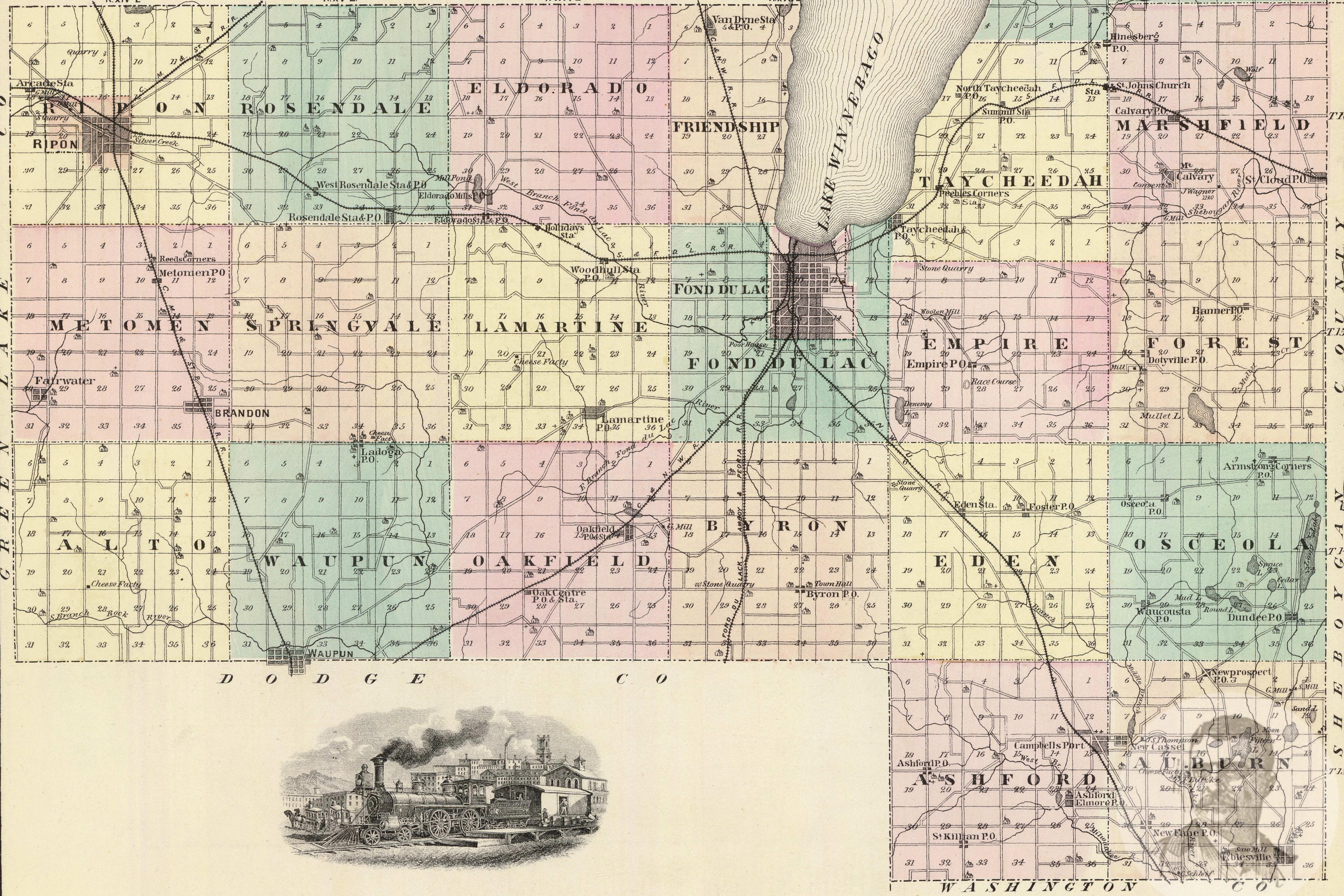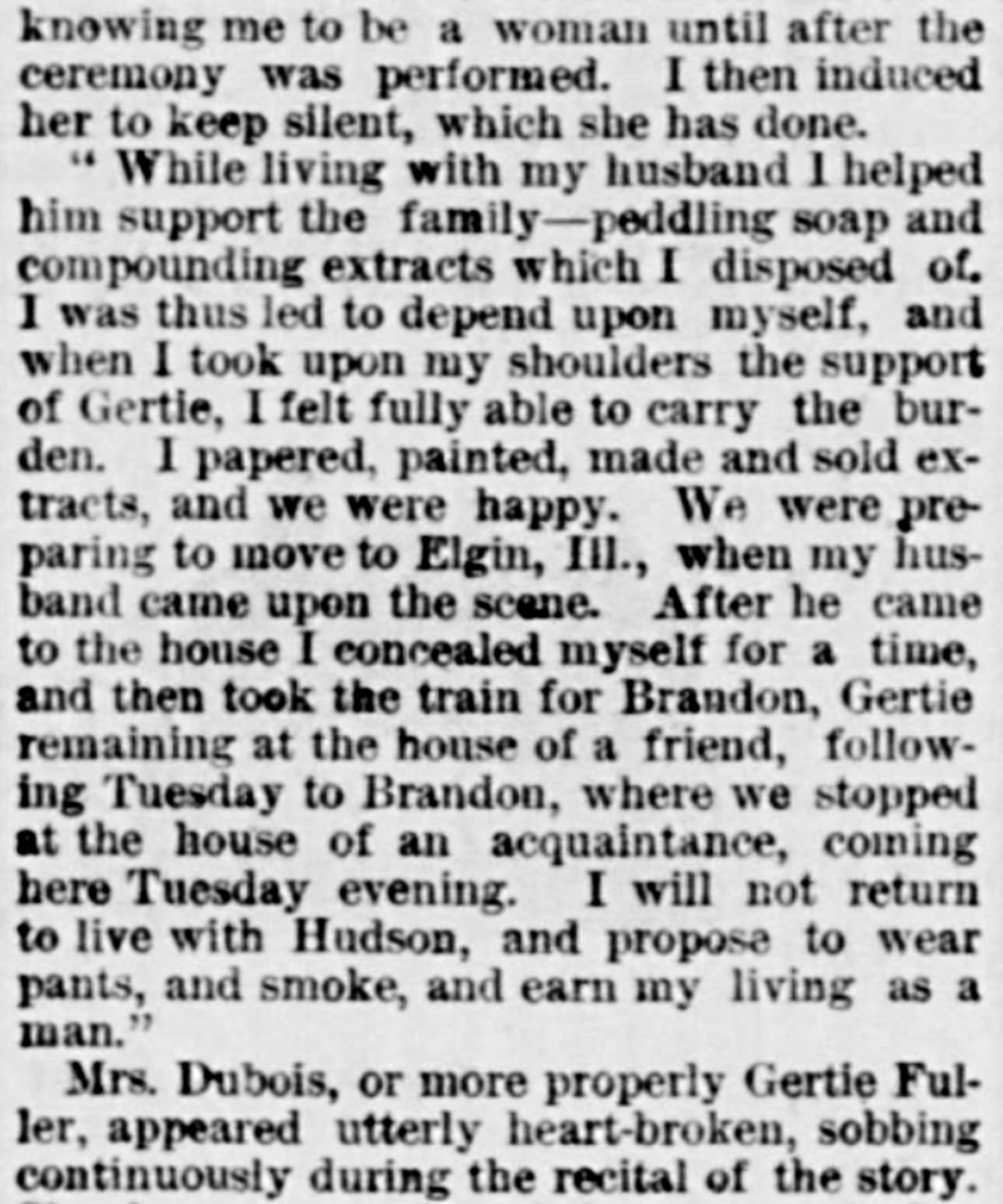
Francis Dubois / Frances Outcault: a queer second chance at life

“I... propose to wear pants, smoke, and earn my living as a man.”
In late 1881, “Mrs. Hudson” left behind a husband and two children in Illinois to live as a man named Francis “Frank” Dubois in Wisconsin. Even after Mr. Hudson tracked them down, ended Dubois’ marriage with their wife, and made them return to Illinois in 1883, Francis/Frances still found a way to live their truth decades later.
Francis spent the first 28 years of their life in Belvidere, Illinois, where they were expected to be a daughter, wife, and mother. They grew up there, the third of five children, raised by their father and stepmother. In 1871, in Belvidere, 18-year-old “Delia” Derthick married 42-year-old Samuel Hudson (1829-1895), a soap seller. And it was in that town where “Mrs. Hudson” gave birth to two daughters.
Fatefully, the Hudsons moved to the city of Fond du Lac, Wisconsin around 1881.
By December of that year, Samuel decided to move the family back to Belvidere. He took the train there with their children first, expecting his “wife” to follow soon after. “Mrs. Hudson,” however, never arrived in Belvidere.
In January 1882, Francis Dubois arrived in Waupun.
In Frank's own words
When interviewed by the press in Brandon, Francis explained how they made a living in Waupun, what their future plans with Gertie had been, and how they had tried to escape their husband this second, less successful time. They also clearly stated that they did not want to spend the rest of their life as “Mrs. Hudson”:
“I will not return to live with Hudson, and propose to wear pants, smoke, and earn my living as a man.”
They also tried to convince the interviewer that they had “induced her [Gertie] to keep silent” once she learned of their assigned sex after their wedding.
Francis may have been telling the truth, or they may have said this to protect their wife’s reputation.
Gertie wept during the interview.
According to the interviewer, Francis did too.
Short-lived liberties
It was not until after Samuel’s death that Francis could be themself again. Soon after their husband’s death in 1895, Francis, living as a woman, remarried a widower named William Outcalt (1850-1930) in Rockford.
From then on, Francis, who had been forced to be “Delia Hudson” for much of their life, including the decade after their two years in Wisconsin, went by Frances Outcalt.
While they did not necessarily live as a man again, they were able to live the last twenty five years of their life as Francis/Frances, until their death on July 1, 1920.
 Francis “Du Buoys,” as their name was written on their marriage certificate (Wisconsin Historical Society)
Francis “Du Buoys,” as their name was written on their marriage certificate (Wisconsin Historical Society)
recent blog posts
December 17, 2025 | Michail Takach
December 16, 2025 | Michail Takach
December 01, 2025 | Dan Fons
The concept for this web site was envisioned by Don Schwamb in 2003, and over the next 15 years, he was the sole researcher, programmer and primary contributor, bearing all costs for hosting the web site personally.




